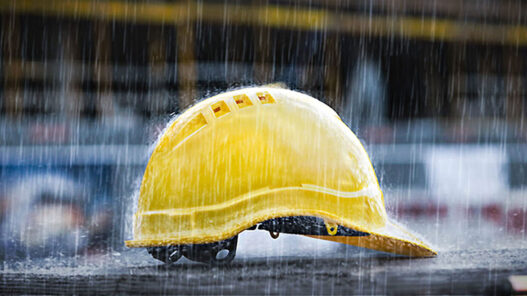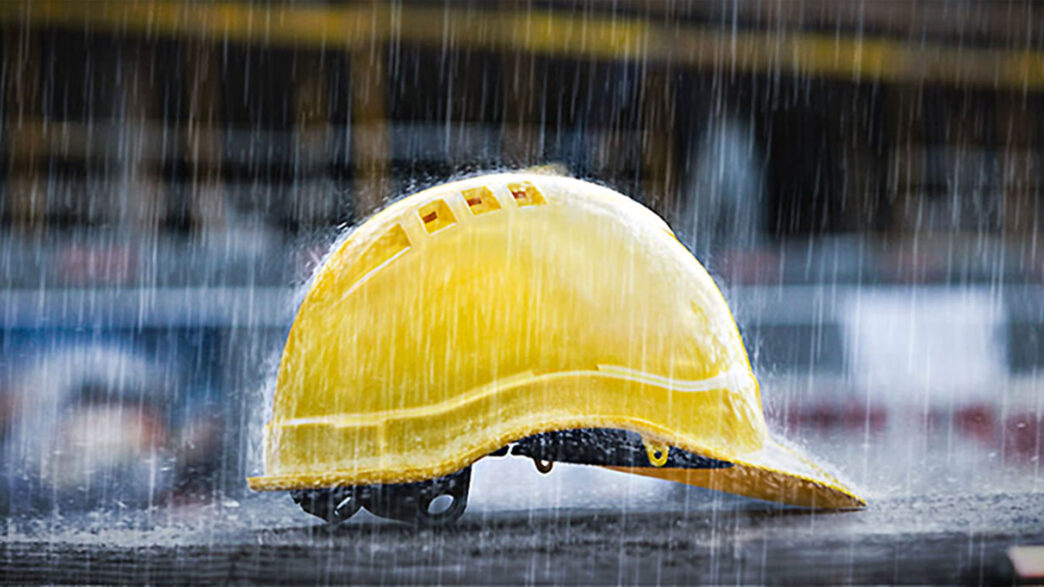Rain in Dubai doesn’t arrive politely. It turns up fast, tests every shortcut on site, and then leaves you with silt, glare, and a queue of decisions. The crews that keep moving are those that are tidier, calmer, and have planned ahead because anything can go wrong. If compressors cough up water, tools stutter. If runoff has nowhere to go, excavations sulk. If power trips, well, then the day pretty much unravels. This is a practical playbook for wet spells on your tough jobs, for people who’d rather finish the shift than tell war stories about it.
Table of Contents
Read the sky, reshape the day!
A rainy day isn’t business-as-usual. It’s a different pace. Smart supervisors know to check the forecast the night before and quietly reshuffle the board if need be.
That means high-risk tasks move up or out, low-risk indoor work fills the back half, and materials that hate moisture get covered or staged inside.
One concrete subcontractor does something simple when a front is coming: they pre-cut and bundle polythene sheets, then leave them at the ends of active bays. No speeches, no drama, just the bits that stop a scramble when the first drops hit.
Air that stays dry at the tool.
Compressed air powers more than people admit on our sites: fixings, blow-downs, small pneumatic tools, and even site clean-ups before coatings.
When the ground is wet, the enemy isn’t the pressure. It’s moisture sneaking into lines and making everything feel spongy. And good crews are those that tweak the setup rather than blame the kit.
On rainy days, you want to shift your compressor intake off the splash zone and raise the hose run on timber bearers so it falls naturally towards a low-point drain. The “first blast” of the morning may look dirty for ten seconds, but then the tools will run crisp all day. And that’s what matters.
Water goes where the site tells it to.
Rainwater doesn’t have opinions. It follows gradients, tyre ruts, scaffold feet and whatever “temporary” storage was left in the wrong place.
The crews that cope read those gentle decisions and nudge them. And it doesn’t need to be expensive or super innovative, either. It just needs to work.
For example, you can keep bamboo canes in a pickup for wet mornings. As the first shower builds, a crew member can walk the slab and drop a cane where water lingers. The site will now have a dotted map of “deal with me” points.
It takes five minutes, and it turns guesswork into a map. Now, the team know exactly where to lay a board or cut a shallow channel.
And excavations are really where schedules get humbled during rain spells. Trench work halts if inflow beats your pumping capacity, so the aim is to slow, stage and lift.
The solution? Use shallow berms to stagger flows into a sump, then lift cleaner water out beyond the work face.
The submersible should sit on a pallet with the right fittings taped to the handle, so the de watering pump reaches the hole before anything else does. So that when an overnight rain spell does dump on your team, the crew are able to move water within a quarter-hour and start pouring by mid-afternoon.
People set the pace.
Rain changes how people see and move. Visibility drops, footing changes, and patience is at an all-time low. The fix is a calm beat. You’ll have short radio check-ins, fewer loudspeaker moments, and line-of-sight decisions that make sense to someone carrying a load.
Your team doesn’t need loud safety; they just need efficient safety. You see, a pair of rubber floor mats dropped at a shiny gangway is a better safety talk than a poster ever will be.
And remember, hydration and shelter are very important in such busy times. A dry space for gloves and a place to step out of the spray will stop the slow sulk that turns the afternoon heavy. Trust me, these small but effective courtesies become everything when the weather is harsh.
After the shower, before the rush.
When the sky clears, we all know that the urge is to sprint. But it’s much better to just breathe and reset in order. Dry and check electrical enclosures, walk pad and shoring edges, bleed air lines before the “my tool’s weak” chorus starts, and clear the first ten metres inside each access point.
A contractor near the edge of the city keeps a one-page “rain memory” clipped in the site office, which is updated after every spell. It notes where water pooled, how long each sump took to clear, and which corner always bites.
It’s scrawled notes, not exactly a report. But the team look at that as their guide. This way, the next time the clouds gather, the crew can start two moves ahead.Rain will always test a site’s patience, but it doesn’t have to stop it. The crews that keep going are prepared in the small ways that matter. So, when the next downpour hits, the job doesn’t stall. It simply shifts tempo, makes sure the electric generator is running and out of moisture, and gets started!




